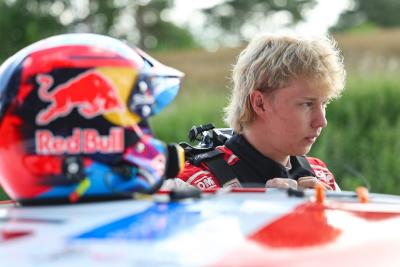Rovanpera dominates HYAcentre Rally from Toyota team-mate Evans
The two factory-backed drivers entered the Tampere-based event as a warm-up for this weekend’s Secto Rally Finland – the ninth round of the FIA World Rally Championship – and as predicted dominated right from the off.
Persistent – and heavy – rain did make for tricky conditions across the eight special stages that made up a competitive route totalling 50 miles with Rovanpera adapting the quickest to wrap up the win by 11.6 seconds.
“It was really good to be honest,” said the 22-year-old, who currently leads the World Rally Championship standings. “The weather was quite extreme – there was a lot of rain and a lot of mud – but definitely all of the things we tested in our pre-event test were confirmed here. It is always important to be really sure about the settings.
“It was a good day, and the car felt good in the muddy conditions. And, of course, to win the rally is not so bad but definitely in these conditions it was a real challenge, especially on the second pass.
“We had a few moments here and there because sometimes you were fully on top of the mud or water, so extreme conditions, so let’s hope it is a bit wet for Rally Finland so we can use this set-up.
“It was great to see so many Finnish fans out,” he added. “It was a small rally but there were so many people watching and supporting all the big cars, so I think it was cool we were doing the event.”
Rovanpera and Evans were joined at HYAcentre Rally by M-Sport Ford’s Pierre-Louis Loubet. Despite the Frenchman’s run being interrupted by intermittent ECU problems with his Puma Rally1, he came home in seventh.
Loubet deputised for Ott Tanak on the basis the Estonian believes that he is already getting “the maximum” out of the hybrid-powered car on the loose and would have gained little from the exercise.
Increasingly, World Rally teams have turned to national stage rallies to prop up their pre-event test activities following a decision by the FIA to limit M-Sport Ford, Toyota and Hyundai to 21 days – or seven per driver – compared to 28 last season.
Competing on smaller events is seen as a way of circumventing the rules and clawing back all-important testing mileage – and data – that would have otherwise been lost.











